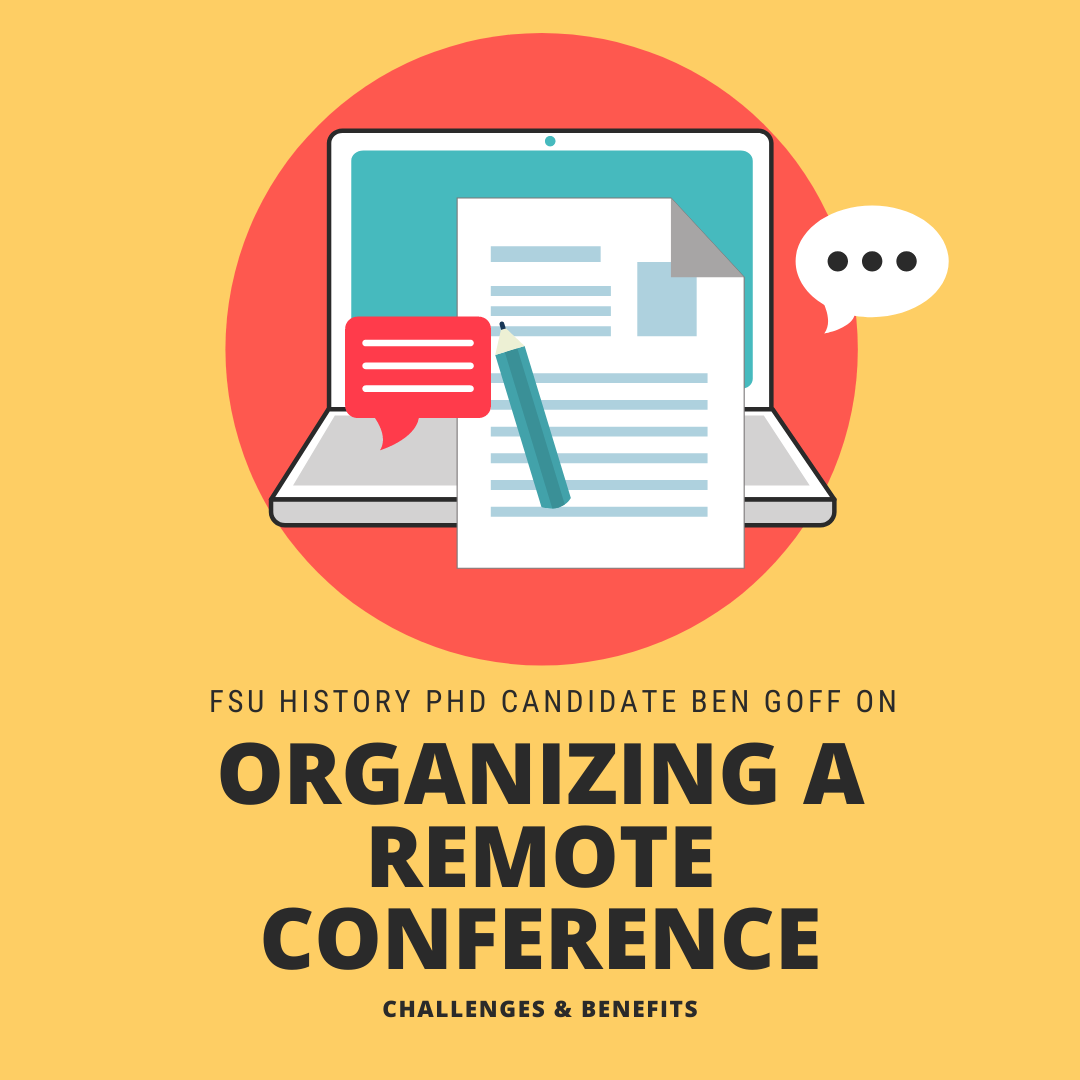What is it like to organize a virtual conference?

In the first part of this series of posts, we asked some of FSU History’s graduate students what it was like to participate in a remote conference. In this second piece, we turn to Ben Goff, who organized the History Graduate Student Association’s spring 2020 conference, to find out what it was like to organize such an online event. Ben, who was vice president of HGSA, had been immersed in organizing the conference since September 2019. It was set to take place on April 3, 2020 on FSU’s main campus in Tallahassee.
Three weeks before the event was scheduled to happen, COVID 19 forced FSU to transition to remote instruction to protect the health of its students, faculty, and staff. Dena Sutphin [DS] asked Ben [BG] how he handled the transition.
DS: What kind of challenges did you face in the process?
BG: The greatest challenge was convincing people who had agreed to do an in-person conference to switch to an online format. Most were hesitant for a number of reasons. First, some participants thought they might have to do extra work to prepare for the new online setting. Second, some felt that attendance was not worth the hassle given the lack of in-person interactions and the difficulties of networking online. Finally, others likely had already gotten what they wanted out of the conference. In other words, they could still put a line on their CV without attending, which is understandable given how troubling the pandemic was at the time, …
Another challenge was paying the keynote speaker. We had established a contract before the pandemic hit. This contract stipulated that the speaker be paid for “services rendered to the university.” With the move online - it was no longer clear to the university that those same services were being rendered. We had to convince FSU, that the keynote speech and speaker were still valuable commodities that could serve the university.
DS: Was it very different to organize a conference online versus in person?
BG: The main difference was adjusting the format of the panels on the fly. I thought that having people read out their papers in an online setting would be a bit boring. Listening to 20-minute conference presentations can be exhausting even in-person; I thought the exhaustion would be heightened in an online format. I suggested that people pre-circulate papers to the members of their panel ... This way everyone would have already read the papers beforehand, and the commentators could jump straight into their remarks and then the floor could be opened for questions afterward. …
A similar situation happened with the keynote speech, … We pre-circulated a methodological article that the keynote speaker had written and opened the floor for questions and discussion after some brief remarks.
Some aspects remained quite similar - like trying to group disparate papers together to form panels and searching for chairs and commentators willing to devote their time and energy to the conference for relatively little pay-off. Other aspect faded away completely. I no longer had to worry about food, rooms, parking, electronic equipment … (which was a nice relief).
DS: If the HGSA conference had been remote from the beginning, what would you have done differently while putting it together?
BG: I would have studied other virtual conferences, asking questions like - What organizations or groups have been doing this sort of thing for a long time? What is their approach? I would have thought about using the budget in different and creative ways. …
I might also have thought about highlighting digital humanities and technological literacy amongst historians, asking for panels that speak to this very timely issue. Now that everything is online, how can we up our game with regards to technology? How can we create interactive media quickly, cheaply, and easily?
DS: Did any part of the conference go especially well, or better than you thought it might? Why?
BG: I think switching the panel format (pre-circulating papers to the entire panel and more time devoted to comments and Q/A was a big success. The panels could be finished in an hour and fifteen minutes. And the discussions were longer and more in-depth than those at some “professional” conferences. I would suggest this format going forward. … Also, switching the keynote to a Q/A-style session worked wonders, and was more engaging ... This [format] gives people the opportunity to read the papers on their own time and at their own pace.

